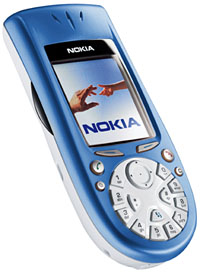
Minutes are lost each day pulling out, untangling, plugging in, winding up, and putting away wires -- enough time to total 1.3 billion lost labor hours annually according to a study by Logitech International. What if there was a way to connect devices without having to use wires?
There is, and it is a short-range wireless technology called Bluetooth. Bluetooth is designed to make devices "talk" to each other without wires connecting the two, or more, devices. Bluetooth unifies products people use everyday such as cell phones, headsets, personal digital assistants (PDAs), laptops, and even cars, to automatically and wirelessly share information.
"Bluetooth allows people to perform simple tasks more simply, such as transferring a daily agenda from a computer to a PDA, without having to cradle the device," says Mike McCamon, executive director of the Bluetooth Special Interest Group. "But there are no limits to it uses as it can do more complex and critical tasks, such as connecting a heart monitor to a cell phone to prompt a 911 call in the case of heart problems."
Currently, there are seven main ways that Bluetooth is used. Those include connecting a mobile phone with a headset, PDA, automobile, or PC; or connecting a PC with a keyboard and mouse, printer or PDA.
The mobile phone is often considered the "hub" of Bluetooth activity. If a consumer has a mobile phone with Bluetooth, like the Nokia 3650 camera phone, they cannot only take pictures to send to friends and family through the phone, but they can also send those pictures directly to a printer in another room -- all without wires.
"The Bluetooth enabled mobile phone is the 'Swiss army knife' of technology," says Randy Roberts, director of imaging for Nokia Americas. "Since it is the device consumers carry with them most often, it is the obvious choice for capturing and sharing life experiences, through multimedia messaging (MMS) with video and photos, and more traditional voice and text."
To alleviate the stress of cell phone use in cars, drivers can use the Ericsson T68i cell phone and the Motorola headset, among others. Both contain Bluetooth and connect wirelessly to create a hands-free communication device, which supports voice activated dialing and answering.
Instead of headsets, DaimlerChrysler, Ford, BMW and Saab vehicles offer an entirely different hands-free cellular experience. The driver's voice dials and speaks through the system located in the dashboard, while the actual cell phone can be anywhere within the car. The Bluetooth technology allows the car system to pick up a call already in progress when the ignition starts, signaling to the driver that it is time to put down the cell phone and focus on the road.
Offices and home workspaces become tidier and more aesthetically pleasing by using Bluetooth technology and eliminating the need for unsightly cords that crisscross the office floor. Consumers can even put the printer in the closet, as Bluetooth technology does not rely on line-of-sight to work.
Whether people are running errands, working in an office, or even vacationing at the beach, Bluetooth enabled devices allow access to necessary information wirelessly, when they need it, and despite locale. Says McCamon, don't let wires tether you to your desk or put restraints on your lifestyle. Unplug and connect by using Bluetooth devices.